Scanning Electron Microscopy (SEM). It bombards the sample’s surface with a finely focused electron beam and observes and analyzes the surface or fracture morphology of the sample through the secondary electrons and backscattered electrons generated by the interaction between the electrons and the model. Scanning electron microscopy is widely used in the research of rock and soil, graphite, ceramics, and nanomaterials, and plays an important role in the field of scientific research.
The electron source is one of the most important components of a scanning electron microscope (SEM) and is the main factor determining its maximum analytical performance.
Three electron sources are commonly found in SEMs: tungsten filaments, solid hexaboride crystals, and field emission guns.
| Tungsten hairpin | LaB6 crystal | Schottky FEG | |
| Emission mechanism | Thermionic | Thermionic | Electron tunneling |
| Lifetime | 100 hours | 1500 hours | >10,000 hours |
| Tip emitting diameter | 100 µm | 25 µm | 100 nm |
| Resolution @30 kV | 4 nm | 3 nm | 1 nm |
| Resolution @1 kV | 50 nm | 25 nm | 5 nm |
| Low-kV imaging (<5 kV) | Yes | No | Yes |
| Vacuum | 10-1 – 10-5 mbar | 10-7 mbar | 10-9 mbar |
| Cost of ownership | Lowest | Medium | Highest |
How do electron sources work?
Electron microscopes create images by emitting electrons that interact with samples, and a reliable source of electrons to “illuminate” samples is one of the most important parts of an electron microscope.
Electron microscopes place very high demands on the electron beam. Currently, only two electron sources meet the requirements: thermionic emission sources and field emission electron sources.
Currently commercially available, the thermal electron emission source uses a tungsten filament (rare) or lanthanum hexaboride (LaB6) crystal (more common); the field emission electron source uses a very thin needle-shaped tungsten wire (specifically, for Schottky emitters and cold field emitters).
The thermal electron source generates electrons when it is heated; the field emission electron source generates electrons when a large potential is applied between it and the anode. Schottky electron sources are a combination of thermal and field emission electron sources.
Field emission electron sources are more expensive than thermionic sources, and thermionic (W or LaB6) and field emission (W) electron sources are not interchangeable. Correspondingly, field emission electron sources produce electrons with better monochromaticity than thermal electron sources.
three electron sources
Three electron sources are commonly used in electron microscopes: tungsten filaments, solid hexaboride crystals, and field emission guns.
1. Tungsten wire
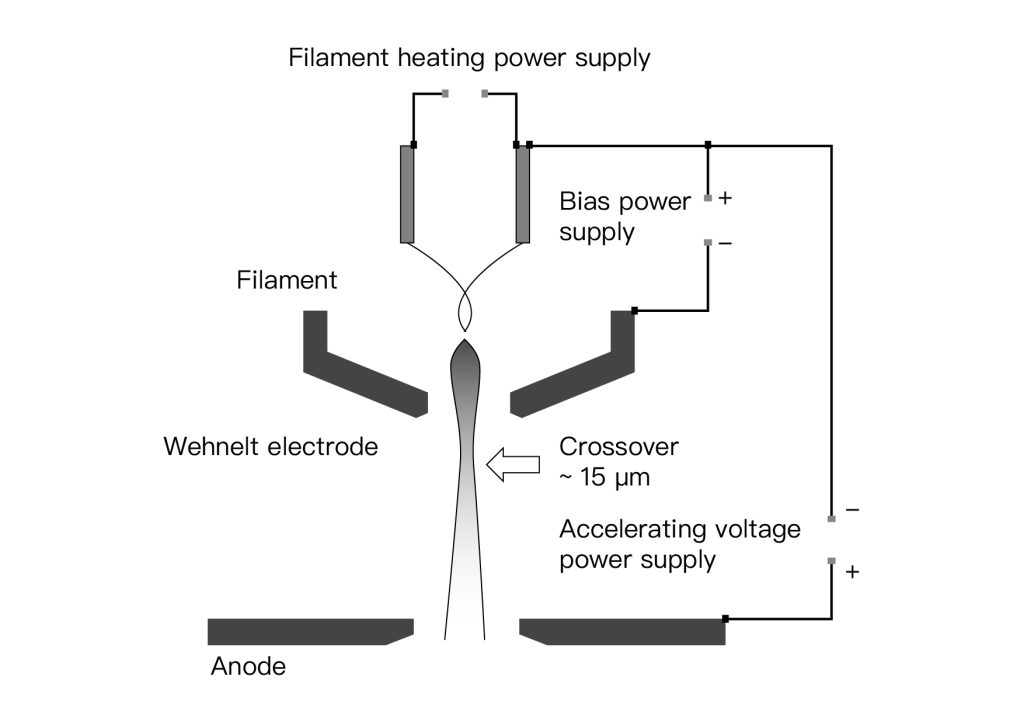
The electron gun is one of the important components in electron optics, which is used to generate electron beams. Figure 1 shows the thermal emission electron gun (TE gun).
In Figure 1, the filament (Filament) is made of tungsten wire in a fork shape (approximately 100um in diameter) (as shown in Figure 2); or it is composed of artificial lens LaB6 (as shown in Figure 3).
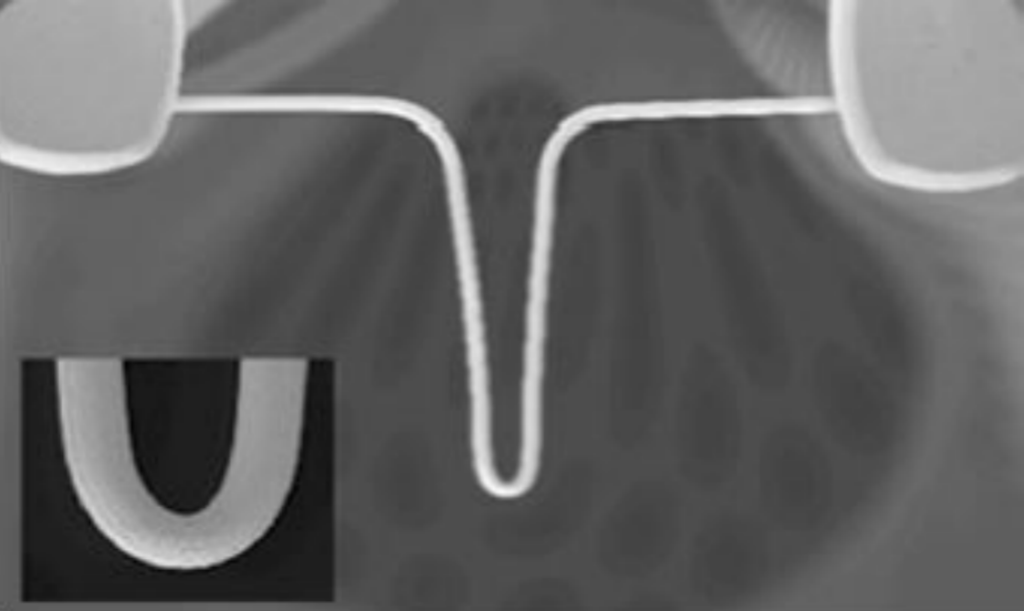
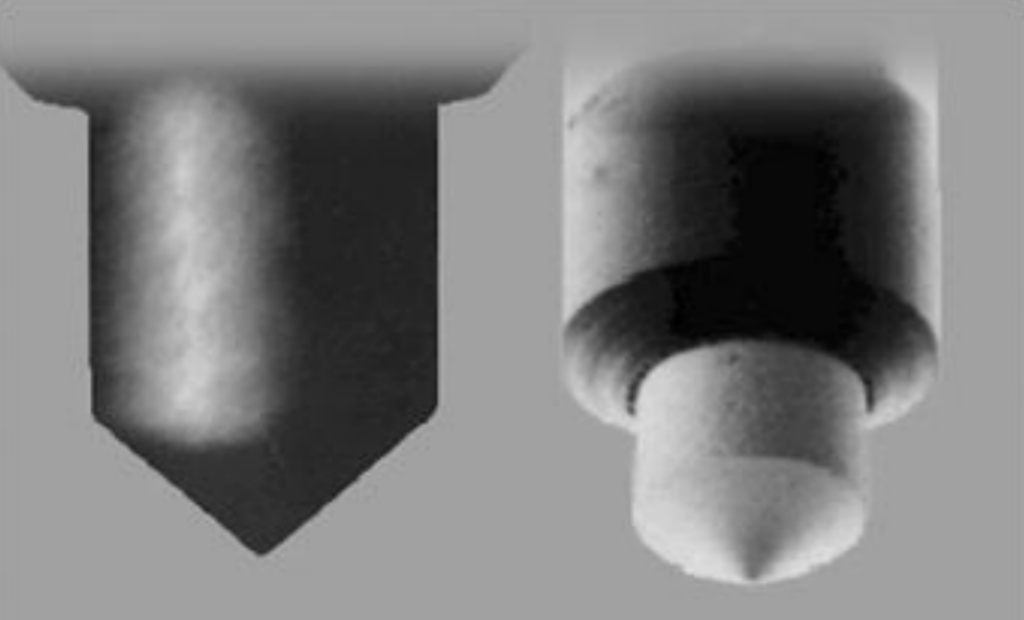
Tungsten hairpins were the light source used in the first generation of electron microscopes and are still the most commonly used light source today. Tungsten sources are relatively inexpensive and are designed to be replaced quickly and easily during regular use of the SEM.
While they are the lowest-cost option, tungsten emitters also have the lowest performance compared to other electron sources.
Tungsten thermionic sources operate at white-hot temperatures around 2800 K, causing them to evaporate over time and risk contaminating the column and sample. It also makes the light source susceptible to sudden burnout during imaging, which can cause severe disruption, especially during the analysis of sensitive samples.
The average lifespan of a tungsten hairpin light source is about 100 hours. These sources also undergo thermal cycling each time the column is vented for sample exchange, resulting in frequent changes in beam astigmatism and alignment. This results in blurred SEM images and must be manually corrected by the user throughout the imaging process.
2. LaB6
These sources utilize highly polished lanthanum hexaboride (LaB6) or cerium hexaboride (CeB6) crystals for thermionic emission. Hexaboride crystals have a lower work function than tungsten, so they can emit ten times more electrons than tungsten at all accelerating voltages.
Brighter beams have two key advantages: a higher signal-to-noise ratio and higher resolution, making them a popular choice for most SEM applications.
They are much more stable than tungsten and stay warm and in a vacuum all the time, so they require far less tuning and last about 10 to 15 times longer before needing to be replaced. The source’s lifetime slowly decreases over time and does not suddenly become depleted, which means replacement can be scheduled between sessions.
Hexaboride-based electron guns only require astigmatism adjustments every 3-6 months, rather than the constant adjustments standard with tungsten-based SEMs. While both LaB6 and CeB6 materials offer similar properties, newer CeB6 sources have become more common in recent years due to their better resistance to evaporation and longer lifetimes. However, these sources do require higher vacuum levels and temperature control than tungsten hairpin sources to ensure they function properly.
3. Field Emission Gun (FEG)
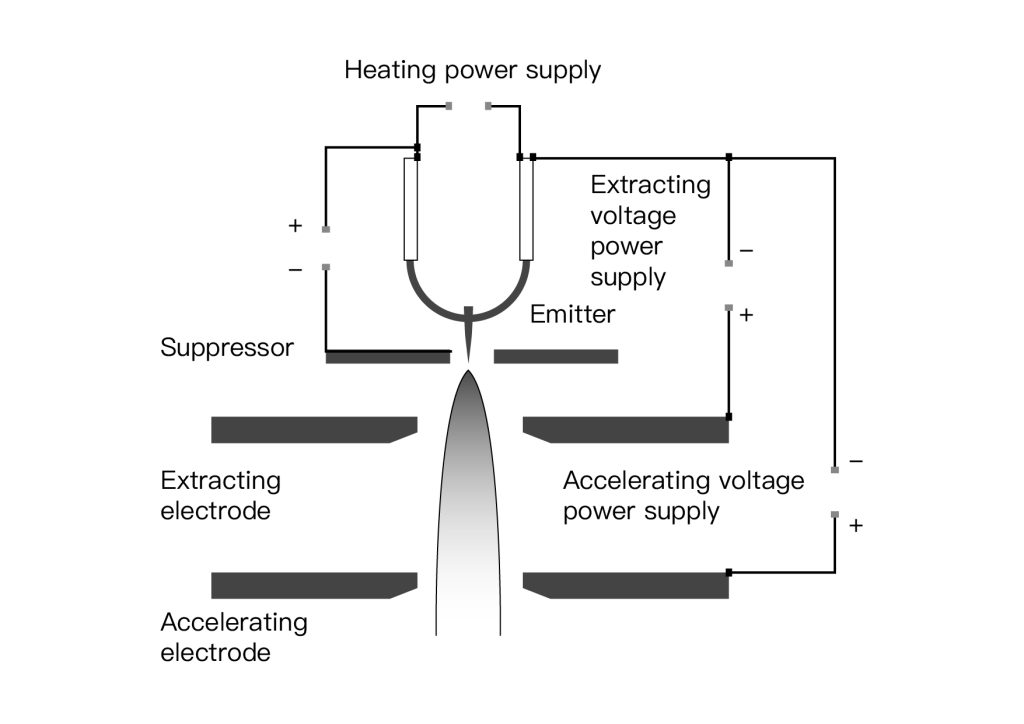
The FEG source consists of an extremely thin tip made of a single tungsten crystal and relies on electron tunneling to emit electrons. SEMs typically use a Schottky FEG, which acts as a field-assisted thermionic emitter. This enables it to emit the brightest and most coherent electron beam, making it ideal for applications requiring high spatial resolution.
Although many manufacturers call it field emission, it is not actually a field emission source, because its tip is relatively blunt, and if the heating is stopped, there will be no emission current. More precisely, Schottky is a ” Field-Assisted Thermionic Source”.
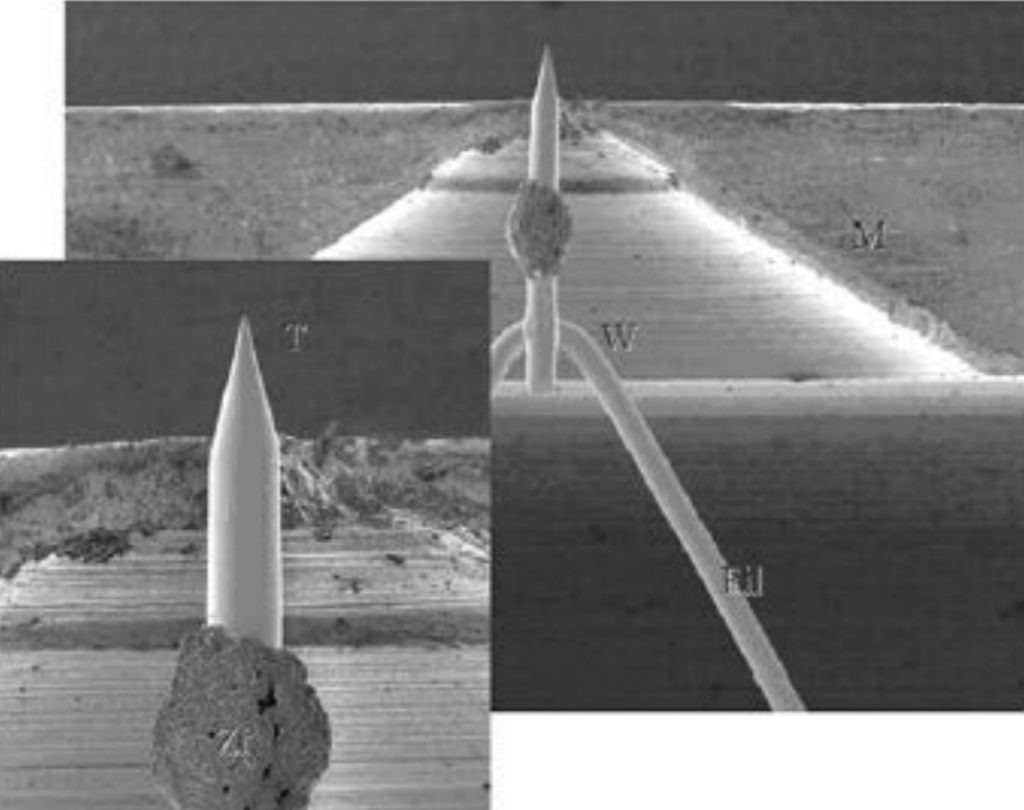
The operating temperature of the Schottky emission type is 1800K. It is coated with ZrO on the tungsten (100) single crystal. ZrO reduces the work function from 4.5eV of pure tungsten to 2.8eV, and the external high electric field makes the potential barrier even more. The narrowness becomes lower so that electrons can easily jump over the energy barrier in the form of thermal energy (not tunneling effect), and escape from the surface of the needle tip. The required vacuum degree is about 10-8~10-9torr.
Its emission current stability is good, and the total current emitted is also large. And its electron energy distribution is very small, only slightly inferior to the cold field emission electron gun. The diameter of the electron source is larger than that of the cold type, so the image resolution is slightly worse than that of the cold field emission type.
Since ZrO is always covered on the filament, the Schottky beam is very stable, but when the ZrO is exhausted eventually, the life of the filament will come to an end, usually 2-3 years.
